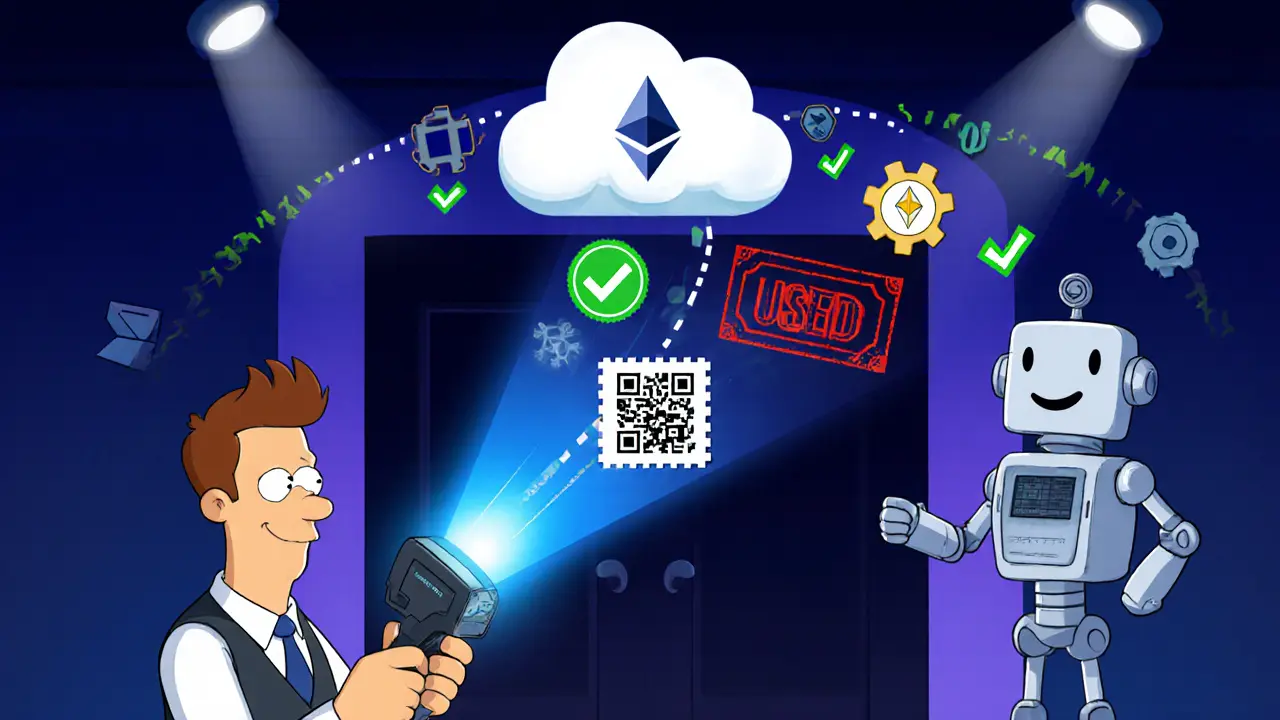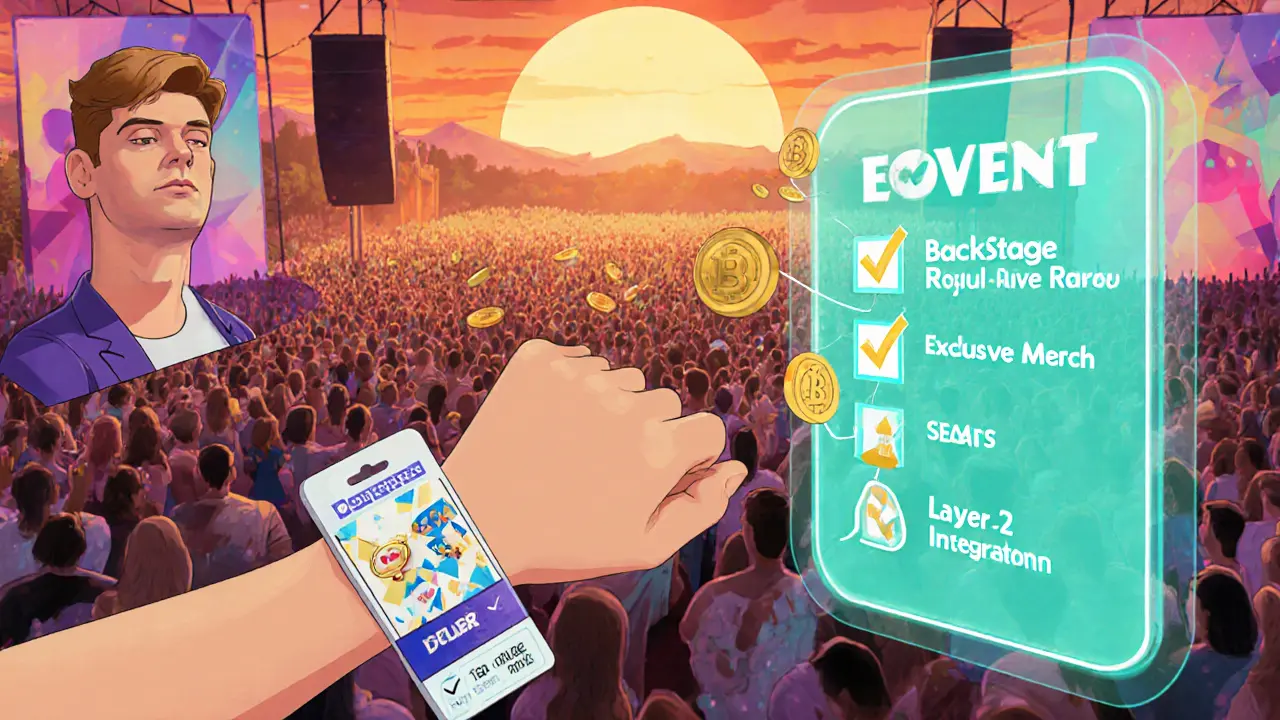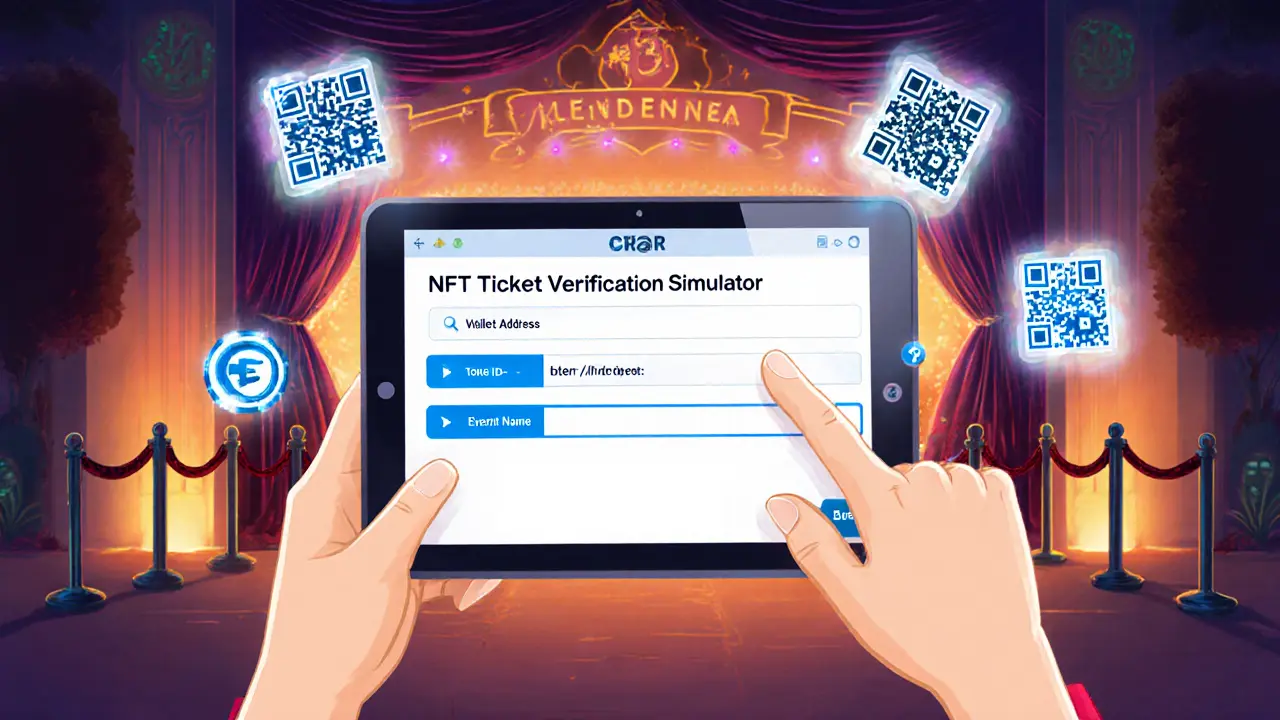NFT Ticket Verification Simulator
Simulate how an NFT ticket is verified at an event entrance using blockchain technology. Enter details about your ticket below and click 'Verify Ticket' to see the verification process in action.
When you hear NFT Ticket Authenticity Verification is a blockchain‑based method that proves a digital ticket is genuine and owned by the person presenting it, you might wonder how it differs from scanning a QR code at a venue. In short, the verification relies on cryptographic proofs stored on a distributed ledger, so there’s no single database an attacker can hack.
What an NFT Ticket Actually Is
An NFT Ticket is a non‑fungible token that represents a single entry pass. Unlike regular cryptocurrencies, each token carries unique metadata - event name, seat number, owner address, and a timestamp - that cannot be duplicated.
Why Blockchain Matters
Every transaction involving an NFT Ticket is recorded on a Blockchain. The ledger is immutable: once a ticket is minted, transferred, or marked as used, that record cannot be altered without consensus from the network. This immutability eliminates the classic “copy‑and‑paste” fraud that plagues paper or QR‑code tickets.
How Smart Contracts Enable Automated Verification
A Smart Contract is a self‑executing piece of code stored on the blockchain. For ticketing, the contract defines rules such as:
- Transfer ownership only when the buyer’s wallet address is valid.
- Mark a ticket as "checked‑in" the moment a venue scanner confirms the owner.
- Pay a royalty back to the event organizer on every resale.
Because these rules run automatically, there’s no need for a central ticketing company to intervene.
Typical Verification Flow at the Door
- Attendee opens their Digital Wallet app and displays the NFT QR code.
- Venue staff scan the code with a mobile scanner that queries the Ethereum network (or a layer‑2 solution) to fetch the token’s current state.
- The scanner checks two things: (a) the token is still owned by the presenting address, and (b) the token has not been flagged as "used".
- If both checks pass, the smart contract updates the token’s status to "used" and the gate opens.
This process usually takes less than a second thanks to services like SeatlabNFT that cache blockchain data and provide a fast API for venue scanners.

Benefits Over Traditional QR‑Code or Barcode Tickets
| Feature | NFT Ticket | Traditional Ticket |
|---|---|---|
| Fraud resistance | Cryptographic proof on immutable ledger | Relies on centralized database, vulnerable to hacks |
| Resale control | Smart contracts enforce royalties and transfer limits | Often uncontrolled, enables scalping |
| Ownership traceability | Full on‑chain history visible to anyone | Limited to issuer’s records |
| Verification speed | Depends on scanner API, typically sub‑second | Instant check against local database |
| Environmental impact | Layer‑2 solutions reduce energy use | Physical printing or paperless QR codes |
Key Challenges and How to Overcome Them
While the technology is powerful, there are a few practical hurdles:
- Used‑ticket replay: If a ticket isn’t marked as "used" on‑chain, someone could hand off the same phone to another person. Solution: integrate an off‑chain cache that syncs with the smart contract in real time, or employ a one‑time digital signature that expires after the first scan.
- Transaction costs: On mainnet Ethereum, gas fees can spike. Solution: use layer‑2 networks (Polygon, Arbitrum) or batching techniques for mass check‑ins.
- User experience: Not everyone is comfortable handling crypto wallets. Solution: provide a custodial app that abstracts wallet management while still issuing true NFTs on the back end.
Extending Verification to Collectibles and Perks
Beyond entry, organizers can tie extra benefits to the same NFT - for example, a backstage pass or exclusive digital merch. The scanner can read additional metadata (like "vip_access": true) and unlock gated areas. This creates a seamless experience where a single token handles ticketing, loyalty rewards, and merchandise redemption.
Future Directions
We can expect three trends to shape the next wave of NFT ticket verification:
- Hybrid verification: Combining on‑chain proof with edge‑device caching to handle massive crowds without latency.
- Dynamic NFTs: Tickets that update in real time (e.g., changing seat assignments or adding last‑minute perks) via smart‑contract calls.
- Interoperable standards: Industry groups are drafting ERC‑721 extensions that standardize fields like event date, venue, and resale rules, making it easier for different platforms to talk to each other.
When these pieces click together, the ticketing ecosystem will become as transparent as a public blockchain and as user‑friendly as a QR code scanner.
Quick Checklist for Organizers Wanting to Deploy NFT Ticket Verification
- Choose a blockchain with low gas fees (Polygon, Optimism).
- Mint tickets as ERC‑721 tokens with clear metadata (event, seat, expiry).
- Write a smart contract that (a) marks tickets as used, (b) enforces resale royalties, and (c) emits an event on check‑in.
- Partner with a scanning provider (e.g., SeatlabNFT) that offers a fast API.
- Provide attendees a simple mobile app or custodial wallet that hides the crypto complexity.
- Test the full flow with a small crowd before the big day.

Frequently Asked Questions
Can I still use a paper ticket if I buy an NFT ticket?
Most NFT systems replace the paper ticket entirely. If you need a physical backup, the organizer can print a QR code that links to the same on‑chain token, but the QR code alone won’t prove ownership without the blockchain check.
What happens if I lose my phone?
Because the NFT lives in a wallet, you can restore it on a new device using your seed phrase or by contacting the event’s support team for a custodial re‑issuance. The token itself never disappears.
Are there any privacy concerns?
Blockchain addresses are pseudonymous. Organizers can optionally link a hashed email to the token for KYC without exposing the full address publicly.
How does royalty enforcement work on the secondary market?
The smart contract includes a % fee clause. Every time the token changes hands, the contract automatically sends the predefined royalty to the organizer’s wallet.
Is NFT ticket verification eco‑friendly?
Using proof‑of‑stake or layer‑2 solutions reduces energy consumption dramatically compared to early proof‑of‑work blockchains. The carbon footprint per ticket is now comparable to a single email.







Write a comment